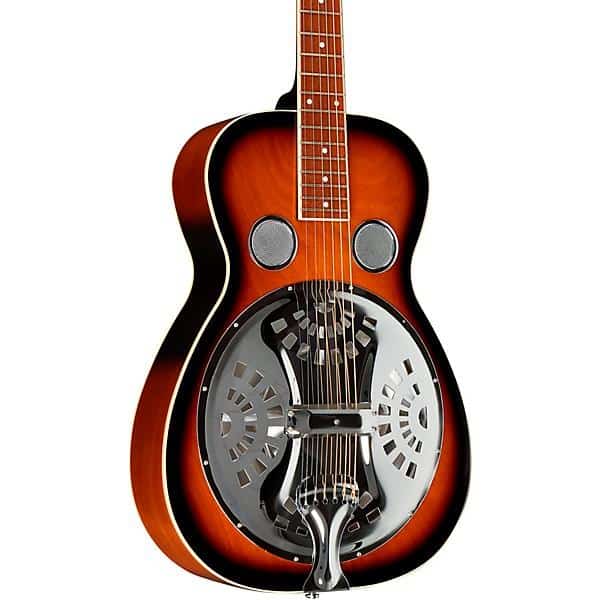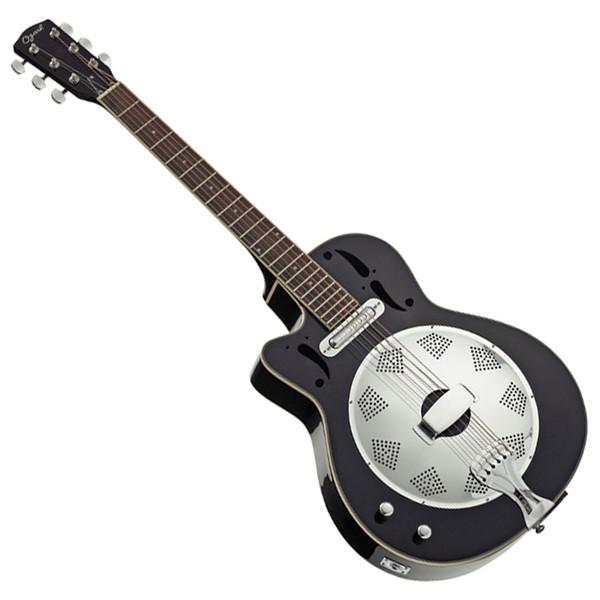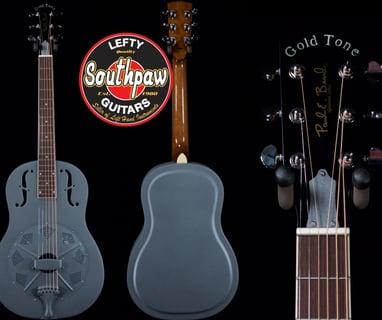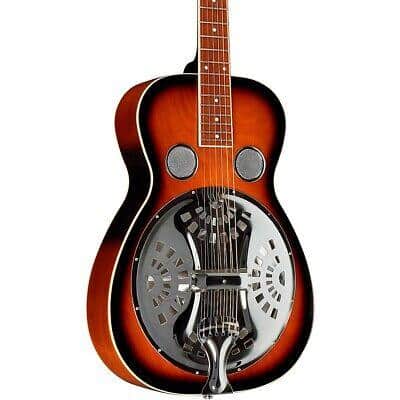Ever since I tinkered on my first guitar, the rich, sonorous tones of left-handed resonator guitars have been somewhat of an obsession. I have since witnessed a transformative era in the sphere of these unique instruments, an era that has redefined my understanding of their distinctive features and usage. But this story, intricate and enchanting as it is, I’ll save for later.
The world of left-handed resonator guitars is filled with fascinating twists and rewarding revelations. My journey from a young enthusiast to an experienced guitar crafter has been lined with resonator guitars of all shapes, sizes and resonances. This guide distills that journey, shares the lessons learned and wraps it all up in a one-stop compendium.
Prepare to delve deep into the realm of these captivating instruments. From understanding their functionality to converting right-handed models into left-handed marvels, let’s pull back the veil on the world of left-handed resonator guitars, together.
Understanding Resonator Guitars
Distinctive Features

Over the span of my career, I’ve delved into the unique intricacies of left-handed resonator guitars, gaining a thorough understanding of how each distinctive feature contributes to their overall sound and resonance. Here, I will share my knowledge on their salient features.
Design plays a critical role in the unique sound of these instruments. The spun cone, tailpiece, and bridge present in left-handed resonator guitars are primarily responsible for their notable resonation. Located underneath the guitar’s top, the cone acts as a sonic amplifier, while the bridge transfers the strings’ vibrations to the cone, thereby creating the resonating character that’s exclusive to these guitars.
Another essential feature of left-handed resonator guitars is the reversed string orientation, specifically designed for the convenience of left-handed players.
The characteristics of these guitars, each playing a significant role in producing their signature vibrancy, manifest the unparalleled craftsmanship behind them. As we proceed, I’ll provide practical insights into converting right-handed resonator guitars for left-handed use, drawing from my firsthand experiences.
Functionality and Use

Delving into the domain of resonator guitars, their function situates them on a unique pedestal in music. From handcrafting these instruments, I’ve observed their role – their uniqueness lies in the deep, metallic resonance, a far cry from typical guitars. This distinct sound is a result of the metal cone which amplifies the vibrations from the strings.
Use of resonator guitars runs deep into the roots of music history, particularly bluegrass and blues. The loud, rich tone created by these guitars work exceptionally for slide or bottleneck playing. Their usage isn’t sequestered to only these genres, though. They find a versatile array in music styles, providing a splendid acoustic performance amidst other amplified instruments.
Much like how every resonator guitar I crafted has resonated with a different tune, intention, and intensity, they exist not just in form or function, but as a unique voice in music. Understanding this functionality and use can deepen your connection with your instrument and enrich your performance.
Converting Right-Handed Resonator Guitars
Steps to Convert

Moving towards the conversion steps, I cannot stress enough that precision, patience, and a keen understanding of your instrument are pivotal in successfully doing this shift. It isn’t a process that should be rushed. As you dive into the world of left-handed resonator guitars, this DIY guide should come in handy, essentially serving as your map and compass.
Firstly, you would need to remove the strings and the bridge, ensuring you store each component in a secure place for reassembly. Note the position of the bridge for correct repositioning. Following this, you would need to flip the nut and the saddle. These two components are specifically angled and intended for right-handed play, so reversing them is critical.
Next, the cover plate and tailpiece will need slight adjustments. Re-string the resonator and lastly, set the action and intonation to suit left-handed play. While these conversion steps are manageable by a motivated and savvy do-it-yourselfer, seeking professional help is sometimes necessary.
Now that we’ve covered the steps to convert, ensure these modifications suit your level of comfort and ease while playing. Transitioning to a left-handed resonator guitar can be an exciting journey, and I hope this DIY guide assists you as you embark onto uncharted territories.
Precautions and Tips

Precautions keep you from venturing down the wrong path, protecting both you and your guitar. This conversion task, while exciting, is fraught with tiny pitfalls that can ruin your prized instrument. A thorough understanding of the inner anatomy of the guitar and the proper tools for the job are paramount. Hence, not rushing into it is my biggest tip.
Remember— care and precision can make a world of difference for your left-handed resonator guitar. Exercises patience, plan meticulously, and cherish this rewarding process, making the most of each note of its transformative journey.
Where to Purchase Left-Handed Resonator Guitars
Online Platforms

Having thoroughly discussed the careful process of converting right-handed guitars, let’s explore where to purchase left-handed resonator guitars. Online platforms have truly revolutionized the game for left-handed players and music enthusiasts alike.
The digital sphere is incredibly resourceful and offers an unmatched variety. Personally, I have found some of the best models from well-esteemed online platforms. The accessibility, convenience, and extensive range of options offered by these platforms make online purchasing my go-to route.
I assure you, armed with the discussed precautions and tips, your online purchasing experience will be worthwhile. Moving forward, let’s delve into the option of physical stores.
Physical Stores

Having explored online options, let’s transition into the charm of physical stores. They offer an unrivaled experience of feeling various guitars in your grip and hearing their unique resonance. Over the years, I’ve had the privilege to purchase left-handed resonator guitars from a myriad of reputable stores. The personal interaction, direct feedback, and the opportunity to test before you invest are irreplaceable advantages. Whether you’re a beginner or a seasoned player, physical stores provide an environment for you to make an informed choice. In the following, I’ll share my experiences with some specific locations.
FAQs
What is a left-handed resonator guitar?
Can left-handed individuals play regular guitars?
What features should one consider when buying a left-handed resonator guitar?
Conclusion
In our journey together, we’ve explored many facets of left-handed resonator guitars. We’ve discussed their distinctive features, functionality, and what makes them unique. Won’t it be exciting to apply what we’ve learned so far about left-handed resonator guitars? We’ve even delved into how to convert a right-handed resonator guitar for a left-handed player, bringing to attention important tips and precautionary steps. More importantly, we’ve underlined the importance of these guitars for left-handed musicians – their ease of use, the difference they can make to a performance, and where to find them.
So here’s a recap of what we’ve learned and why it’s so vital, not only to left-handed individuals but to the wider music world. The depth of resonance, tone, and authenticity these guitars bring into music is nothing short of remarkable. Indeed, the journey and lessons are just the start – it’s up to you to play the chords and make the music. In doing, we truly understand the resonance of the left-handed resonator guitar.
